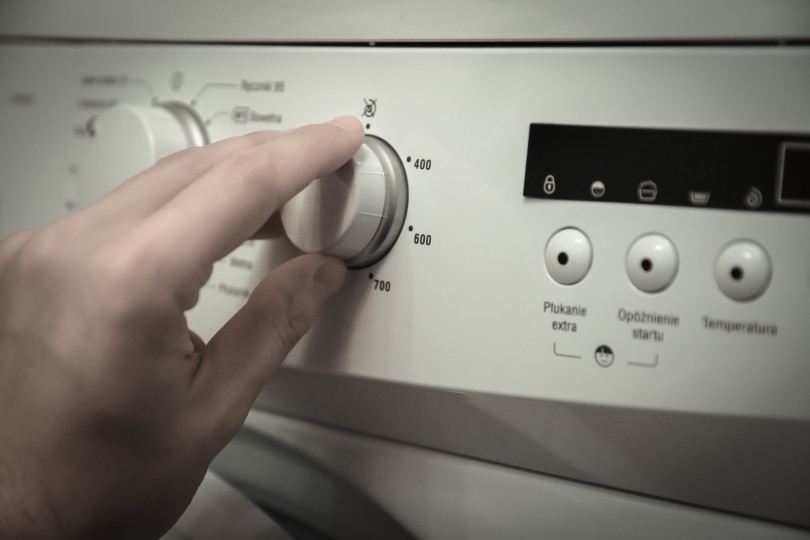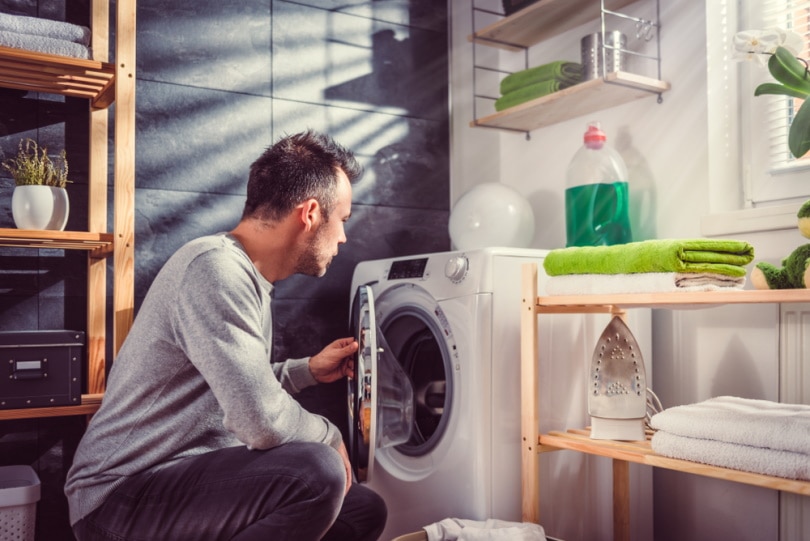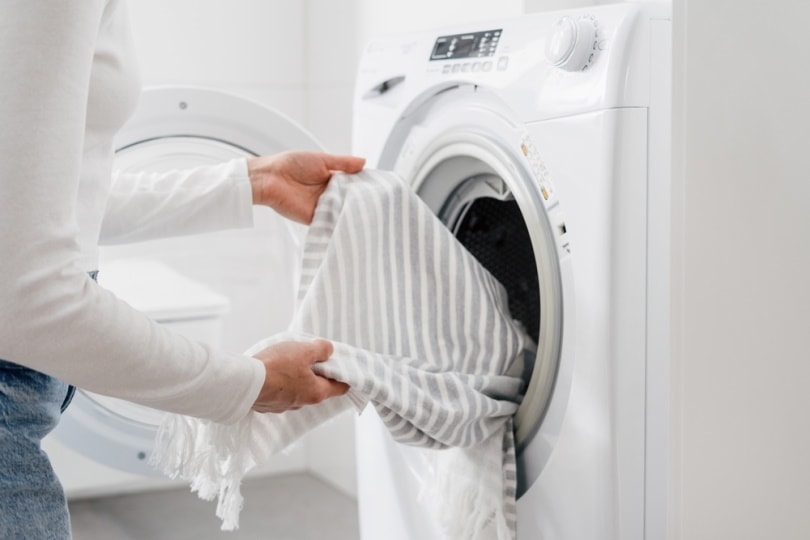How Hot Does a Dryer Get? Facts & FAQ
-

- Last updated:

Dryers use heat to remove water from clothing. The heat warms the water in the clothes and turns it to steam which is then cycled out of the dryer. The result is warm and dry clothes that everyone loves. But how hot do dryers get? What temperatures are required to get clothes dry?
The temperatures in a dryer are far higher than anything most people experience on a daily basis, but they might not be as hot as people imagine. Here is how hot a typical dryer gets and when a dryer gets too hot. The standard household dryer will operate at temperatures between 120˚F, and 135˚F.

Typical Dryer Temperature
Most dryers will not run lower than 120˚F, and most will not run any higher than 135˚F. The temperature range is pretty much the industry standard. When you run a dryer at low settings for delicates, it will run around 120˚F, and when you run it on high to get a quick dry, it will run between 130 and 135˚F.
| Dryer Setting | Typical Temperature (˚F) |
| Low | 120 – 125˚F |
| Medium | 125 – 130˚F |
| High | 130 – 135˚F |
Dryers that are failing to meet the 120˚F floor are usually suffering from an issue. A low temperature dryer will leave wet clothes or will take a very long time to dry. Conversely, if your dryer starts running above 135˚F, it can be dangerous and even damage your clothing.

Highest Residential Dryer Temperature
The highest average temperature for standard residential dryers usually caps out at 135˚F. Any higher, and the dryer becomes more dangerous. The hotter the dryer, the hotter the things inside the dryer become to the touch. Manufacturers want to avoid people reaching in and burning themselves on the drum or on metal clasps. Anyone that has burned themselves on a metal jean fastener knows how hot a dryer can make things. Any hotter than 135˚F and clothes can actually start to scorch, burn and become damaged.
That being said, the highest residential dryers can sometimes reach temperatures as high as 150˚F. That is not a standard temperature, but it has been noted before. But that only speaks to dryers you can put in your home. There are large commercial dryers that can get even hotter than that.
Highest Commercial Dryer Temperature
Commercial dryers are designed for different purposes than residential dryers. Large commercial dryers are designed to dry large quantities of clothes or large volumes of clothes like sheets, towels, or bedding. Most commercial dryers can safely operate at 150˚F and can even get as hot as 176˚F. Some commercial dryers are designed to get hot enough to kill living things like bed bugs in a hospitality setting. Commercial dryers often operate at higher standard temperatures than residential dryers.

Can a Dryer Get Too Hot?
Yes. Dryers can absolutely get too hot. If dryers get too hot, they can actually break down and even catch fire. Keeping an eye on your dryer temperature is important to prevent it from overheating. Most modern dryers have a kill switch that will stop the dryer if the internal temperatures pass a certain threshold, but sometimes the thermostat can break, leaving your dryer to heat up well past safe levels.
The most common causes of a dryer that gets too hot are a clogged outflow vent or a broken heating element. If your dryer consistently overheats, you might need to get it checked out. Most residential dryers are not made to run at temperatures above 140˚F for long periods of time.
The best way to prevent a dryer fire is to always make sure that your lint screen is free of debris. Lint is highly flammable, which is why you need to keep your screens clear. Empty the lint screen before every load.
Does the Dryer Heat Kill Germs?
The heat in the dryer can kill some germs, but your dryer should not be used as a pure sanitizer. The dryer works in concert with the washer to ensure that any nasty bugs that might be living in the fibers of your clothes are killed. The washer actually does most of the work when it comes to killing microscopic organisms. The mixture of hot water, friction, motion, and soap kills more things than the heat in the dryer will. The dryer’s heat does help clean up any bugs that might have survived the washer, but the dryer is not a pure sanitizing device.
In order to guarantee a kill for most germs, you have to boil them. The boiling point of water is 212˚F which is a temperature far higher than any dryer can safely produce. Bacteria slow down and start to die at temperatures between 140 and 170˚F, but even those are temperatures that are higher than your typical household dryer will run at. Do not count on your dryer to kill germs effectively. That is what the washing machine is for.

Conclusion
The typical dryer will run at a temperature right around 130˚F. Some dryers can get hotter, especially commercial dryers. That is why your clothes are sometimes hot enough to burn you when they first come out of the dry. Dryer heat helps dry clothes, but they’re not designed to sanitize objects. 120˚F is not hot enough to kill most germs, and you need to wash your clothes in a washing machine to really get clothes clean before drying them.
Featured Image Credit: Piqsels
Contents
